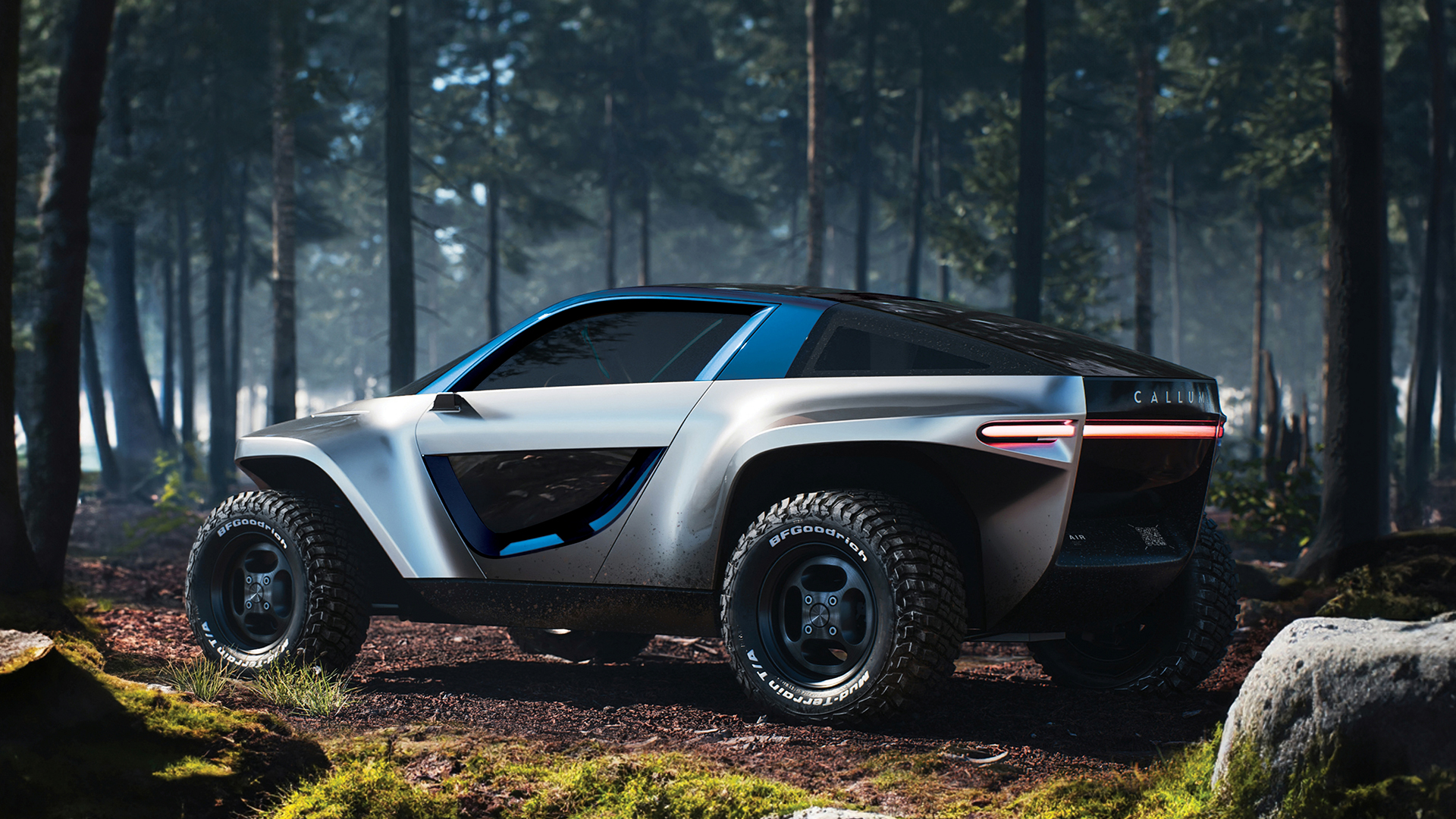The Callum Skye is a futuristic, dune-bashing EV that costs as much as a Porsche 911
Ex-Aston Martin designer wanted to create something that "couldn’t be defined"

Former Jaguar and Aston Martin designer Ian Callum has taken the wraps off his latest project, which takes the form of an electric off-roader that could happily sit in the latest sci-fi blockbuster.
Dubbed Skye, the high performance, all-electric multi-terrain machine is the first car to be designed, engineered and produced entirely in-house by the Callum Designs team. Despite still being in its early stages of prototyping, the company has said that the order books are now open, with prices expected to start at £80,000 (around $100,000 / $120,000) and rise to £110,000 (about $140,000 / AU$210,000) for the more lavishly appointed models.
The Skye features a 42kWh battery pack that is neatly stowed within the 4m-long frame, with overall dimensions putting it on par with things like the current Renault Clio and other compact hatchbacks like the Renault 5 E-Tech Electric.
The engineering team at Callum Designs claim they are aiming for an overall weight of just 1,150kg, allowing the all-wheel-drive off-roader to hit 0-60mph in under four seconds.
"Electric Vehicles lend themselves to tackling different terrains, due to the amount of control we can have over the torque curve and traction at each wheel," Ian Callum said during the launch of his EV wall charger collaboration with UK-based firm Andersen EV.

"We didn’t want to do a sports car, because it was too bloody obvious," he added. "We wanted to do something that was off-beat. I like the idea of doing something that’s difficult to define," he said.
Much of the weight saving comes from the stripped-back interior, which features a 2+2 seating configuration and a pillar-like centre console bridge that houses tactile, rotary touchscreen dials that make it easy to control the HVAC and other key features. A central touchscreen will offer Apple CarPlay and Android Auto functionality.
Sign up for breaking news, reviews, opinion, top tech deals, and more.
The rear seats can be removed entirely to expand the load space, while a cubby hole in the rear is accessed via a hinged tailgate and is big enough to stow a few weekend bags or some smaller sports equipment.
"The biggest market for this likely won’t be the UK, but those areas that have a lot of deserts, for example. I also see California as a perfect place for this car," Callum told us.
In terms of electric range, the official press release states 170 miles, but Callum says he’d like to hit the 200-mile mark, which he feels is plenty enough for exploring the dunes and wilderness, without worrying about having enough charge to get home.
The Callum Skye will begin real-world prototype testing and shake-downs later this year, with its designer claiming that this time next year we should have "two or three running around".
Low volume, high price

Ian Callum is the first to admit that Skye will be a "low volume" model, built to order by his in-house team of engineers. With that in mind, it's not designed to offer a practical solution for the daily driver, but instead inject a bit of fun into wealthy owner's car collections.
The Meyers Manx beach buggy was arguably one of the first to offer a similar "go-anywhere" spirit in the early 1960s, when Californian engineer Bruce Meyers found fame by chopping up a VW Beetle. Volkswagen itself even teased its idea of a modern Manx in 2019 with its ID. Buggy.
That Geneva Motor show concept was produced to highlight the flexibility of VW's EV-dedicated MEB architecture and never went into production, much to the dismay of a number of adoring fans.
But perhaps Skye can pick-up where VW's concept left off, offering a basic but luxuriously finished interior that is paired with some serious off-road chops for weekend thrills. Just don't expect it to be the cheap and cheerful off-road alternative Bruce Meyers had in mind.
You might also like

Leon has been navigating a world where automotive and tech collide for almost 20 years, reporting on everything from in-car entertainment to robotised manufacturing plants. Currently, EVs are the focus of his attentions, but give it a few years and it will be electric vertical take-off and landing craft. Outside of work hours, he can be found tinkering with distinctly analogue motorcycles, because electric motors are no replacement for an old Honda inline four.